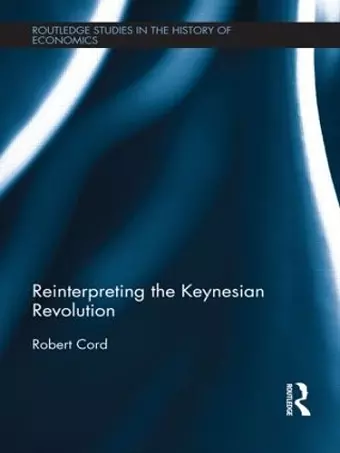Reinterpreting The Keynesian Revolution
Understanding the factors behind Keynesian economic thought
Format:Paperback
Publisher:Taylor & Francis Ltd
Published:4th Mar '15
Currently unavailable, and unfortunately no date known when it will be back
This paperback is available in another edition too:
- Hardback£145.00(9780415595230)

This insightful book explores the reasons behind the Keynesian Revolution, analyzing various factors that contributed to its success and enduring influence.
In Reinterpreting The Keynesian Revolution, the author delves into the multifaceted reasons behind the emergence of Keynesian economics in the early 20th century. This work builds on established traditions within the history of science studies, aiming to provide a comprehensive analysis of the factors that contributed to the success of the Keynesian Revolution. The narrative begins by exploring the timing of John Maynard Keynes's seminal work, The General Theory of Employment, Interest, and Money, which was published shortly after the Great Depression, suggesting that its relevance was not merely coincidental but rather a crucial aspect of its impact.
The book also highlights the significance of Keynes's relationships with the Cambridge 'Circus,' a group of young economists who played a pivotal role in shaping his ideas. Through anecdotal evidence, the author illustrates how these collaborations enriched Keynes's theories, allowing them to resonate with the economic challenges of the time. However, the author argues that previous analyses have often overlooked the interconnectedness of these various factors, leaving a gap in our understanding of the intellectual landscape during this transformative period.
By employing a sociology of science perspective, Reinterpreting The Keynesian Revolution systematically examines the intellectual, technical, institutional, psychological, and financial elements that influenced the success of Keynesian economics. This approach not only clarifies why the macroeconomic revolution was distinctly 'Keynesian' but also sheds light on how Keynes managed to outmaneuver contemporaries like Friedrich von Hayek and Michal Kalecki in the competitive arena of economic thought.
'In summary, then, this book breaks new ground in the literature of the Keynesian revolution and whathappened in the 1930s. It occupies a unique place by unifying and codifying a substantial amount of information on the period and its main actors, thereby contributing to a ‘thick’ historical narrative.'- Constantinos Repapis, St. Peter’s College , Oxford
ISBN: 9781138902657
Dimensions: unknown
Weight: 249g
150 pages